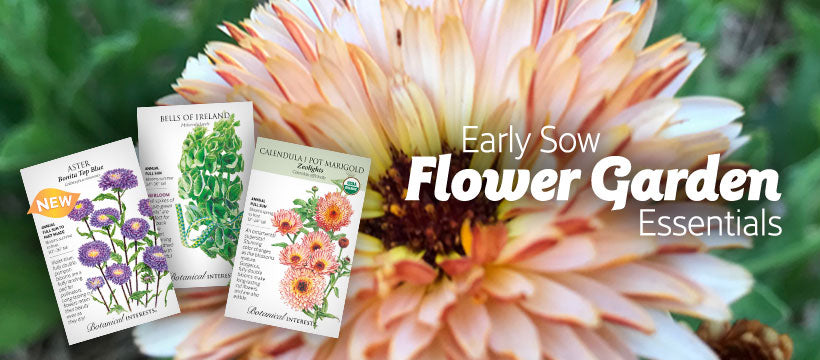Make iced or hot teas all year long with these healthful herbs from your garden. During the growing season you can simply snip tea ingredients for steeping, trying different mixes as you go. As the growing season ends, harvest and dry your herbs so you can enjoy the scents and flavors of the garden even when it is covered in snow. Learn more about preserving herbs and maybe even try our creative tulsi tea combinations. Did we mention custom, homegrown teas make thoughtful gifts?
Herbs for Tea
The herbs listed below are what we think make the best teas. They can also be grown in containers, converting your patio into a tea garden!
Catnip
(Nepeta cataria)
Common uses: Insomnia, anxiety, headaches, migraines, respiratory infections, flu, fever, and digestive aid.
Flavor: Woodsy, grassy, with an underlying mint flavor and lemon aroma
German Chamomile
(Matricaria recutita)
Common Uses: Calming, insomnia, depression, headaches, migraines, and digestive support.
Flavor: Apple
Crimson Clover
(Trifolium incarnatum)
Common Uses: none known
Flavor: Light and floral
Lavender
(Lavandula angustifolia)
Common Uses: Calming, pain relief, and digestive issues.
Flavor: Lavender, slightly sweet, and slightly minty
Anise Hyssop
(Agastache foeniculum)
Common Uses: Coughs, fever, and digestive issues.
Flavor: Sweet mint, licorice
Lemon Balm
(Melissa officinalis)
Common Uses: Insomnia and upset stomach
Flavor: Lemon with a hint of mint
Mint
(Mentha sp.)
Common Uses: Indigestion, upset stomach, nausea, cramps, and muscle spasms
Flavor: Minty
Monarda / Bee Balm / Wild Bergamot
(Monarda spp.)
Common Uses: Coughs, sore throats, nausea, and digestive issues.
Flavor: Lemon, basil, thyme, and mint
True Hyssop
(Hyssopus officinalis)
Common Uses: Expectorant
Flavor: Mint-like
Tulsi/Kapoor Holy Basil
(Ocimum sp.)
Common Uses: Anxiety, digestive health, immune health, expectorant, and as an antioxidant
Flavor: Sweet bubble gum
Brewing
A general rule for measurements is to use about 1 tablespoon of dried herbs per cup for hot tea or 8 tablespoons per gallon for sun or iced tea. Steep leaves for about 3 minutes or longer, depending on your strength preference (use a tea ball or strain the leaves out after steeping). When using fresh herbs, 3 tablespoons generally equals 1 tablespoon dried. From there, you can adjust the amount of herbs or sweeteners like stevia or honey to create your own, perfect cup of tea.
FDA Disclaimer: These statements and products have not been evaluated by the FDA. They are not intended to diagnose, treat, cure, or prevent any disease or condition.





